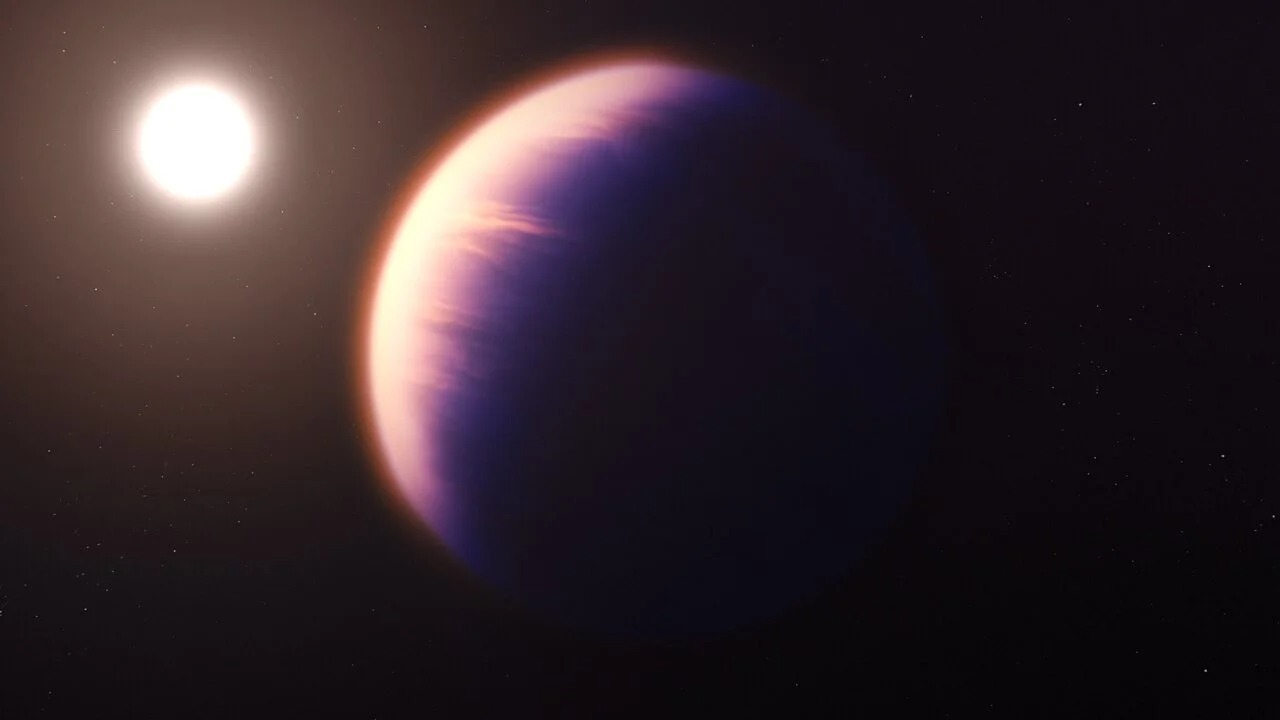According to the European Space Agency, the James Webb Space Telescope has found “unambiguous” evidence of the presence of carbon dioxide in the atmosphere of a distant exoplanet. According to ESA, “this is the first clear, detailed, indisputable evidence” of the presence of carbon dioxide on a planet outside our Solar System.

The distant world is a gas giant, similar to Jupiter, and is located at a distance of about 700 light-years from us. The exoplanet is called WASP-39b and was first discovered in 2011. Previously, fuzzy evidence of the presence of water was found on it, but only now scientists have received irrefutable evidence of the presence of other elements in distant worlds, thanks to the spectroscopic ability of the JWST to peer into the atmosphere of other planets.
WASP-39b is about as massive as Saturn, but has a diameter about 33% larger than Jupiter. That is, the exoplanet is not very dense. It is also incredibly hot on it – the planet is heated to 900 °C, which is the result of a close orbit around the host star.
Irrefutable signal of the presence of CO2
Using the NIRSpec instrument on board James Webb, scientists can decipher the chemical composition of distant worlds. The tool relies on how exoplanets orbit host stars: when planets pass in front of stars or pass through them, scientists see a difference in the wavelengths of light blocked by the planet. When scientists carefully studied WASP-39b, an undeniable signal of the presence of CO2 was recorded.

“As soon as the data appeared on my screen, the unconditional proof of the presence of carbon dioxide captured me. It was a special moment that crossed an important threshold in the study of exoplanets,” said Zafar Rustamkulov, a planetary scientist studying at Johns Hopkins University and a member of the ESA team.
Carbon dioxide makes up most of the atmosphere of Venus and Mars, but this is the first time that a team of scientists has so accurately detected molecules in the atmosphere of an exoplanet. “Carbon dioxide molecules are sensitive indicators of the history of planet formation,” said Mike Line, a planetary scientist at Arizona State University. “By measuring the CO2 property, we can determine how much solid and gaseous material was used to form this gas giant.”
Importance of Opening of James Webb
The discovery is also a sign of what James Webb can do in the narrow range of the mid-infrared spectrum, and indicates that the telescope will be able to “sniff out” a large number of important gases, such as methane, which is an important indicator of the possible existence of life.
On July 12, a team of scientists used another spectrograph aboard the telescope to detect the presence of water in the atmosphere of WASP-96b, a loose gas giant 1,150 light–years away. The latest discovery on WASP-39b adds another molecule – and a planet – to JWST’s growing list of achievements.
Earlier we reported on how TESS discovered a super-earth inside the orbit of hot Jupiter.
Follow us on Twitter to get the most interesting space news in time
https://twitter.com/ust_magazine

